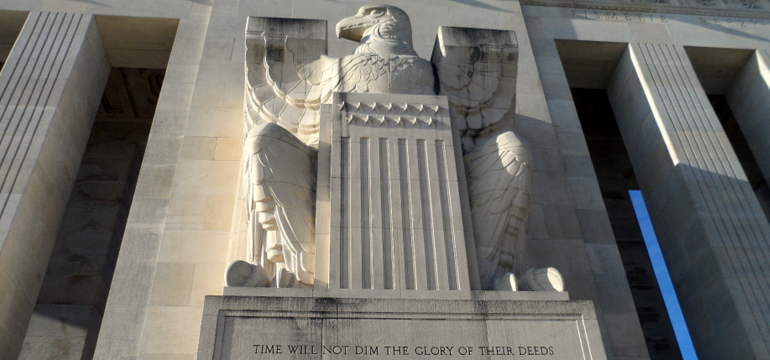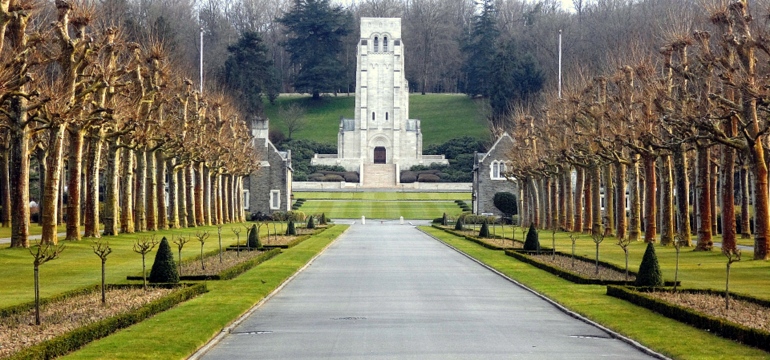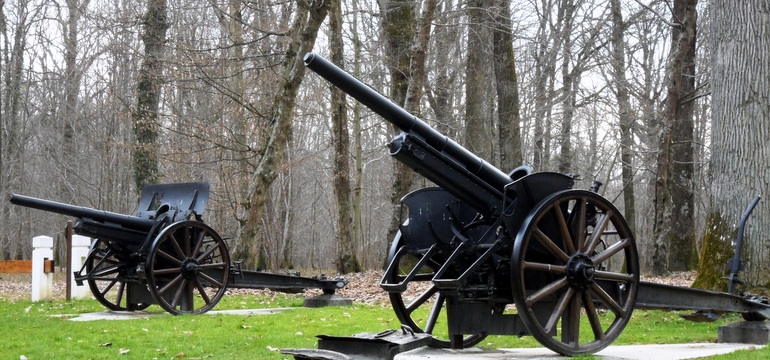WWI Cemetary and Memorial Private Tour & Tasting
Available Daily except Sunday
Highights of this visit include Belleau Wood Cemetery, the American Aisne-Marne Memorial with a panoramic view of the Marne River, the American Memorial at Chateau Thierry and on request a visit to a small Champagne producer. Departs Chateau Thierry.
Includes: Professional Driver Guide / Planning & Reservations
Memorial in Dormans
A monument, built in 1921, and chosen by Marshal Ferdinand Foch, to commemorate the two Battles of the Marne. The first Battle saved France from defeat. It symbolically marks the crossing of the River Marne by German troops in 1914 and in 1918. You will see the La Lanterne des Morts Crypt, Cloister, and Ossuary where every Nov 11, an official ceremony takes place at the ossuary which consists of a senior officer laying a wreath sent by the French President to honor those who died in the Great War.
Aisne-Marne American Cemetery and Memorial Chapel
Built on the front lines occupied by the 2nd Division is below the hill of Belleau Wood where you will see German canons, trench, shell holes, and learn about the key dates and figures involving the 4th Brigade of Marines in 1918.
American Monument Château-Thierry
Located on a hill two miles west of Chateau-Thierry, the monument, also known as the American Aisne-Marne Memorial or Le Monument américain à cote 204, consists of an impressive double colonnade rising above a long terrace. On its west facade are heroic sculptured figures representing the United States and France. 3rd Division joining the fight. Its units assisted French troops in preventing the Germans from crossing the Marne River. The 3rd Division held the south bank of the Marne until the French American counteroffensive forced German withdrawal. It earned the nickname “Rock of the Marne.”
Backstory
Paris Gare de l'Est / Champagne Ardenne
Depart 8:40am / Arrive 9:22am
Return 6:20pm / 7:01pm
Paris Gare de l'Est / Reims Centre Ville
Depart 7:58am / Arrive 8:44am
Depart 12:58am / Arrive 1:44am
Return 5:15pm / 6:01pm (Weekday)
Return 6:01pm / 7:01 (Sat)
Paris Gare de l'Est / Chateau Thierry (except Sunday)
Depart 7:36am / Arrive 8:22am
Depart 8:36am / Arrive 9:22am (Saturday)
Depart 12:36am / Arrive 13:22am
Return 1:01pm / Arrive 1:53pm
Return 5:01pm / Arrive 5:53pm
The Marne River was the site of the Battles that saved Paris it became a focal point at the beginning and end of WW1. The Germans were following the Schlieffen plan developed as early as 1897. The goal was to defeat France early on in the war in order to bring a quick close to the war. To reach Paris, they planned to march through Belgium and cross the Marne River. They expected very little resistance from the Belgians or the French but were in for a surprise.
The Germans were met by a small Belgian force who were were able to slow the advance into France in September of 1914. 2 of their divisions planned to meet south of the Marne River. There was a gap of about twenty miles between these two divisions and the French army took advantage of this gap and put themselves between the two divisions. They were able to hold off the German advance and even sent reinforcements from Paris in taxi cabs. The Germans ended up retreating to the border.
Almost four years later, in June of 1918, the Marne River was again the site of a battle. The German army was planning a last ditch effort to take Paris. The French army needed more help this time. The French commanders were able to persuade the British to send four divisions of soldiers to help protect the Marne River. The US had just entered the war and sent 2 divisions to join the French and British troops. The Allied Forces held firm and even attacked the Germans, sending them in full retreat.
The United States wanted to remain neutral concerning the European conflict and the Americans were fiercely opposed to an entry into war eventhough they lent $2 billion to the French and British. A series of events led to their entry. First, several American ships were sunk by the Germans in the Atlantic and second the interception by the British secret services of a German telegram intended for Mexico from Germany offering them the states of Texas and Arizona if German won. President Wilson persuaded Congress to vote for the entry into war against Germany on 6 April 1917.


